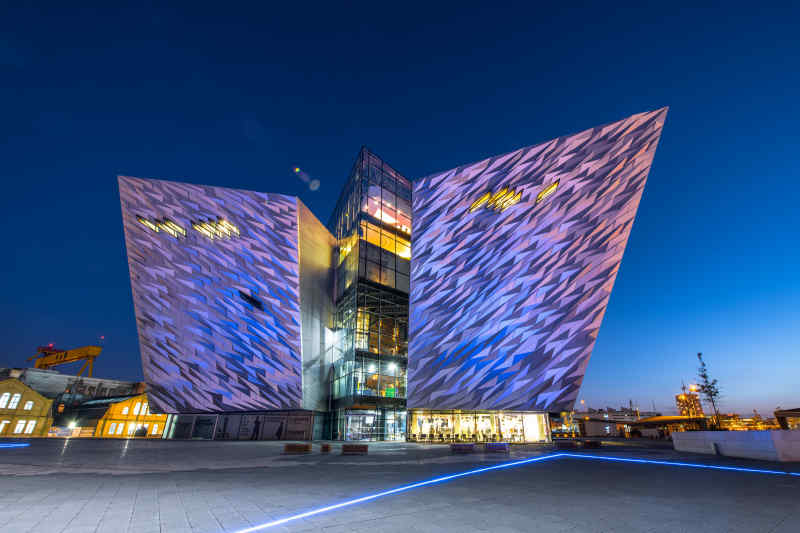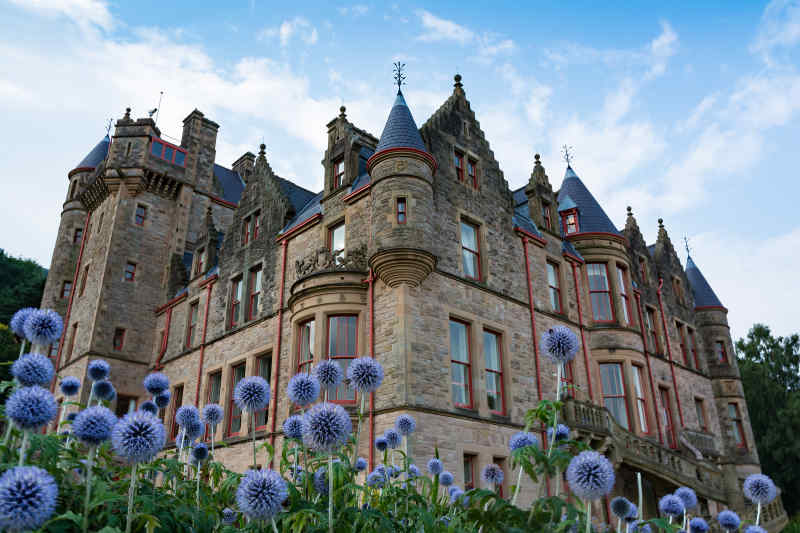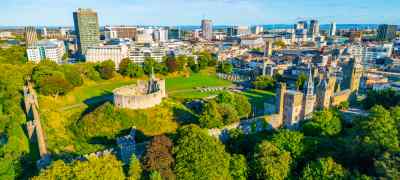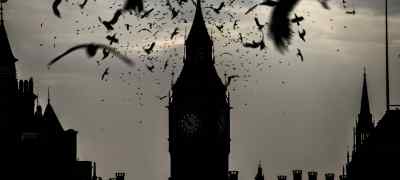By Briana Seftel
The capital of Northern Ireland has shed is bad reputation to become one of Europe’s hottest destinations. Boasting beautiful Victorian architecture, world class cultural institutions, and an anything-but-bland dining scene, a visit to Belfast will surprise you in more ways than one.
What to Know
Straddling the River Lagan, Belfast is a manageable city known as the gateway to Northern Ireland. In the 19th century, the city flourished as a naval port and ship building center, and was the birthplace of the ill-fated Titanic. Beginning in the late 1960s, Belfast became the center for The Troubles, three decades of political conflict between Unionists and Loyalists, and the Provisional Irish Republican Army (IRA) and British forces. Remnants of the city’s troubled past can still be seen in murals and certain neighborhoods, but today Belfast is as welcoming as ever.
When to Go
While summer is peak travel time in Ireland, Belfast is thankfully free of crowds unlike its neighbor to the south, Dublin. Most visitors to the city arrive in July and August, while spring and fall are great for festivals including the Cathedral Quarter Arts Festival in May and the Belfast International Arts Festival in October. Plan a visit from mid-November up to Christmas to see the city full of festive cheer.
How to Get Around
Belfast is a compact city made up of several different quarters, and much of the city can be reached on foot. If the weather is nice, biking is another great way to get around with over 30 docking stations located across the city. If you’d like to use public transportation, the Metro Bus Service runs through the city. Taxis are also readily available and quite affordable - you might even get a history lesson while being driven to your destination.
Where to Eat
From brasseries to traditional pubs, Belfast is quickly becoming a foodie destination. With its proximity to the sea, fresh seafood is plentiful here. Dig into fish and chips or smoked salmon and finish it with a locally brewed beer. For breakfast, it has to be the famous Ulster fry, a gut-busting plate of fried eggs, potato farls, soda bread, pork sausages, bacon, black and white pudding and grilled tomato.
- Mourne Seafood Bar 34-36 Bank St Phone: +44 28 9024 8544
- Cafe Conor 1a Stranmillis Rd Phone: +44 28 9066 3266
- John Long’s Fish & Chip Restaurant 39 Athol St Phone: +44 28 9032 1848
- Bright’s 23-25 High St Phone: +44 28 9024 5688
- Deanes at Queens 1 College Gardens Phone: +44 28 9038 2111
- Muddlers Club 1 Warehouse Lane Phone: +44 28 9031 3199
- Crown Saloon Pub 46 Great Victoria St Phone: +44 28 9024 3187
What to See
Titanic Belfast
Belfast’s top attraction, the Titanic Belfast is a fascinating and immersive experience telling the story of the ill-fated RMS Titanic. Through nine interpretive and interactive galleries, explore the history of the ship from its conception in the early 1900s to its maiden voyage. Get to know the city and people who made her, as well as the 1,500 lives lost. Wrap up your visit by exploring the world’s last remaining White Star vessel and RMS Titanic’s original tender ship, the SS Nomadic.
St. George’s Market
For a foodie feast, make a beeline for St. George’s Market. There has been a Friday market here since 1604, while the present day market dates back to 1896. Open Friday through Sunday, the market offers some of the best bites in the city, from fresh fish to heavenly baked goods. Chat with the vendors, listen to local musicians, pick up souvenirs or just soak in the atmosphere of one of Belfast’s oldest attractions.
Botanic Gardens
Spread across 28 acres near Queens University, the Botanic Gardens are an oasis of calm in the middle of a bustling city. Established in 1828, the gardens are a popular meeting point for students, locals and visitors. The focal point is the Palm House, a beautiful Victorian glasshouse home to tropical plants and birds. Nearby is the Ulster Museum, Belfast’s main museum housing a rich collection of art, history and natural science.
Travel tip: Admission is free to the Botanic Gardens and Ulster Museum!
Belfast City Hall
Take a free public tour through City Hall, the centerpiece of Belfast. Opened in 1906, visitors can take a 45-minute tour of the beautiful Victorian building led by a knowledgeable guide. After exploring its interior, head outside and take a stroll through the Titanic Memorial Garden. At night, the city hall becomes illuminated in a variety of colors.
Belfast Castle
Located in the Cave Hill area of north Belfast, Belfast Castle is an eye-catching estate set on beautiful parklands. Built in the 1860s for a wealthy family, the castle is a popular place for afternoon tea or a stroll through the landscaped grounds. Don’t miss Cave Hill’s famous feature known as Napoleon's Nose, which is believed to have been the inspiration for Jonathan Swift's novel, Gulliver's Travels.
Tips and Tricks
See the city’s expansive mural art depicting The Troubles on a Black Taxi Tour. Knowledgeable drivers are sure to give you unique insight into the city’s past.
Many of Belfast’s shops are either closed on Sundays or operate on limited opening hours (usually 1-5pm).
Northern Ireland is home to 27 Game of Thrones filming locations including the Dark Hedges and Cushendun Caves. If you’re a fan, book a tour or explore the sites on your own.
An hour north of Belfast is Bushmills distillery, which welcomes visitors through tours and tastings of its famous whiskey.
Day Trips
Giant’s Causeway
One hour and 30 minutes by car from Belfast, the Giant’s Causeway is a stunning geological wonder and UNESCO World Heritage Site. Stretching four miles along the scenic Antrim Coast, the causeway is made up of 40,000 interlocking rock columns. Scientists claim the site was formed by a volcanic eruption some 60 million years ago, while locals believe it was built by giants. Hop over the stones and take plenty photos of this iconic coastal beauty.
Carrick-a-Rede Rope Bridge
A walk across Carrick-a-Rede Rope Bridge is sure to put a pep in your step. Swaying nearly 100 feet above the ocean, the rope bridge was built over 250 years ago by fisherman to connect Carrick Island and the County Antrim mainland. Thankfully, many improvements have been made to the bridge, so walking across is completely safe.
Travel tip: The trail to the Carrick-a-Rede Rope Bridge is made up of gravel paths and stone steps, so good walking shoes are recommended.
Derry
Also known as Londonderry, Derry is one of the finest walled towns in Ireland and the UK. Bordering the Republic of Ireland, Derry combines culture and history into one compact city. Walk the 17th-century walls, discover tales of the Spanish Armada at the Tower Museum, or enjoy a picnic in front of Guild Hall, a red brick neo-Gothic marvel.















